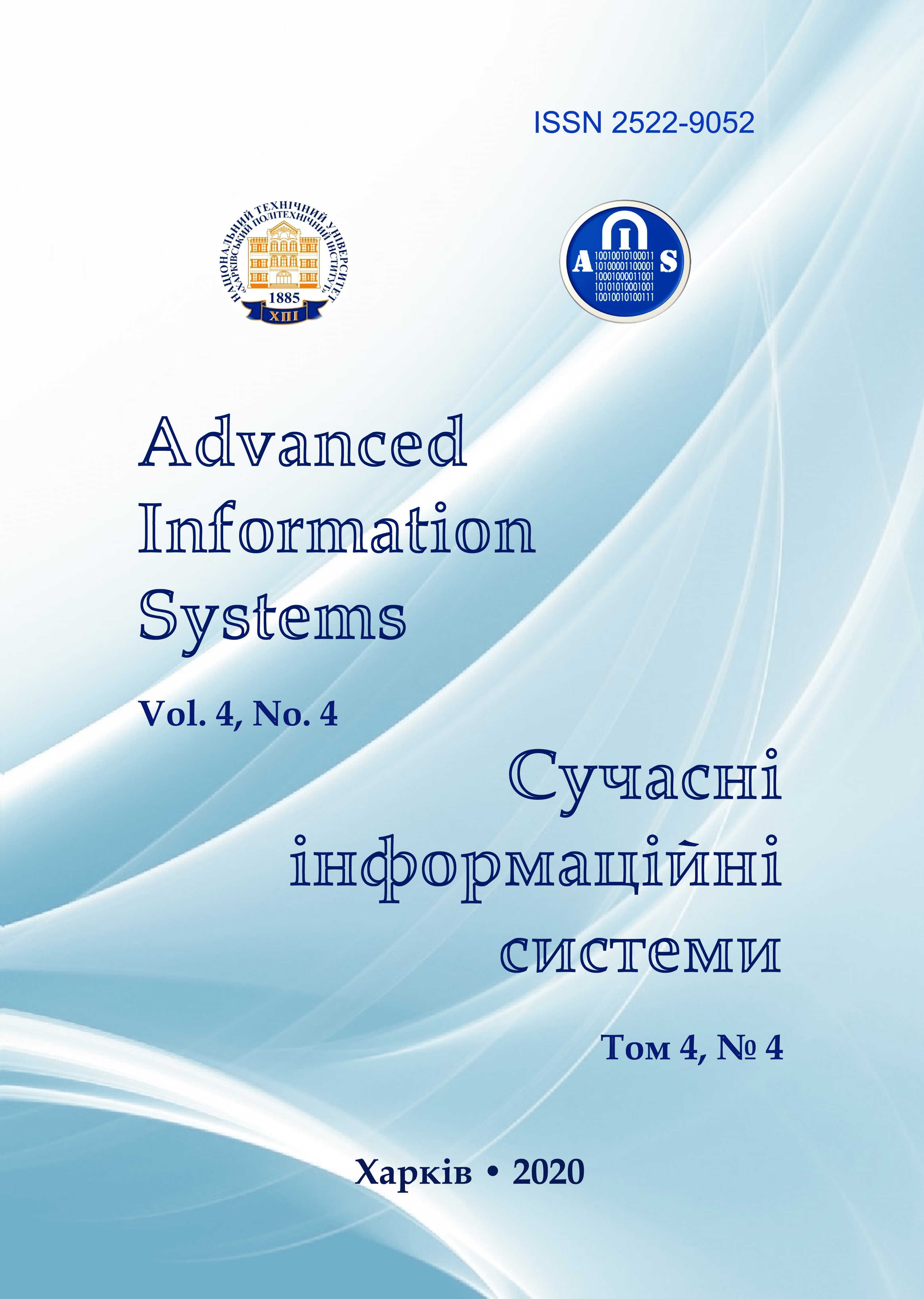DEVELOPMENT THE RESOURCES LOAD VARIATION FORECASTING METHOD WITHIN CLOUD COMPUTING SYSTEMS
Main Article Content
Abstract
Article Details
References
Xiao, Z., Song, W. and Chen, Q. (2013), "Dynamic Resource Allocation Using Virtual Machines for Cloud Computing Environment," IEEE Transactions on Parallel and Distributed Systems, Vol. 24, No. 6, pp. 1107-1117/.
Ashby, W. (2016), An Introduction to Cybernetics (in Russian), URSS, 432 p.
J. Vandebon, J. G. F. Coutinho, W. Luk and T. Chau (2019), "Transparent Heterogeneous Cloud Acceleration," IEEE 30th International Conference on Application-specific Systems, Architectures and Processors (ASAP), New York, NY, USA, pp. 33-33, DOI: https://doi.org/10.1109/ASAP.2019.00-40.
Volkova, A., Shyshkunov, V. (2019), System analysis and modeling of processes in the technosphere (in Russian), Ural University Publishing House, Ekaterinburg, 243 p.
Berketov, G., Mikryukov A., Fedoseev, S. and Golovko, D. (2013), “Models and patterns recognition algorithms in life-cycle management problems of technical systems”, Innovative Information Technologies, Vol. 3, No. 2, pp. 41-50.
Berketov G., Mikryukov A. and Tsurkin A. (2014), “Solving the problems of forecasting the state and managing the life cycle of complex technical complexes by methods of image recognition” (in Russian), Statistics and Economics, No. 1, pp. 138-143, DOI: https://doi.org/10.21686/2500-3925-2014-1-138-143.
Xu, D., Yang, Sh., and Luo, H. (2013), “A Fusion Model for CPU Load Prediction in Cloud Computing”, Journal of Networks, Vol. 8, No. 11, 2506-2511, DOI: https://doi.org/10.4304/jnw.8.11.2506-2511.
Ramezani, F., Lu, J., Hussain, F. (2013), “A Fuzzy Predictable Load Balancing Approach in Cloud Computing”, Proceedings of the International Conference on Grid Computing and Applications (GCA), p. 108.
Bey, K.B., Benhammadi, F., Sebbak, F. (2013), “Fuzzy Subtractive Clustering Based Prediction Approach for CPU Load Availability”, The Fourth International Conference on Cloud Computing, GRIDs, and Virtualization.
Saranya.S, Murugan. B.S (2014), “Intelligent Scheduling System for Dynamic Resource Allocation in Cloud Computing”, International Journal of Advanced Research in Computer Science & Technology, Vol. 2, Issue Special 1, pp. 284-288.
Elman, J. (1990), “Finding structure in time”, Cognitive Science, Vol. 14, No. 2, pp. 179-211.
Hrebeniuk, D. (2018), “Analysis of methods of distribution of resources in the virtualization media”, Control, Navigation and Communication Systems, No. 6(52), pp. 98-103, DOI: https://doi.org/10.26906/SUNZ.2018.6.098.
